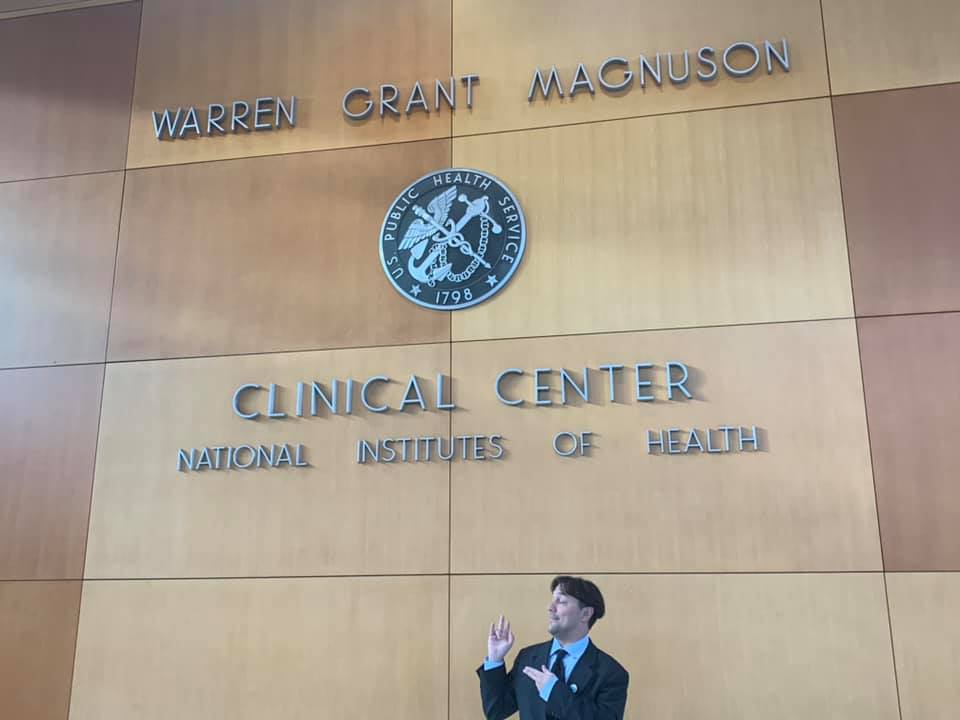Integrated Health Systems, in partnership with Maximum Life Foundation, is funding a trial to rejuvenate microglial cells using telomerase gene therapy. This trial is currently looking for ten patients with mild to moderate Alzheimer’s Disease. At this time five of the positions have been filled. The trial will be conducted in MONTEREY, Mexico. Treatment is …“Alzheimer’s Gene Therapy Human Study Seeks Volunteers”
Category: biotech/medical – Page 2,564


EpiBone, Inc. Receives FDA Clearance to Commence its First-In-Human, Phase 1/2 Trial of its Bone Product, EB-CMF
Potential breakthrough technology for stem-cell based bone replacement
NEW YORK, May 22, 2019 /PRNewswire/ — EpiBone, Inc. today announced that the U.S. Food and Drug Administration (FDA) has granted its Investigational New Drug (IND) clearance to proceed with a Phase 1/2 clinical trial of its lead bone product EpiBone-Craniomaxillofacial (EB-CMF), as a potential treatment for ramus continuity defects in the mandible. The ramus is a key component of the jaw bone which attaches to the muscles associated with chewing.
EB-CMF is a living anatomically correct bone graft manufactured from a patient’s own adipose derived stem cells. This eliminates the need to harvest bone from a patient’s body, potentially reducing pain, surgical and hospitalization time while creating a precision fit with the defect.

Trial vaccine wipes out breast cancer in Florida patient
To the thrill of everyone involved, it worked.
“We saw some evidence of elimination of the tumor, as well as some evidence of the immune system crowding in,” said Dr. Keith Knutson, from the Mayo Clinic Jacksonville.
Knutson said Mercker’s results were, essentially, what their team had hoped the vaccine would do as it developed out, but it was happening in their very first human test subject.




How to Reverse Aging and Live Longer with David Sinclair PhD
💯💯Subscribe for videos on becoming superhuman: https://goo.gl/TSDCuv
Timestamps:
- What Causes Aging and Why It Happens 03:00.
- How to Slow Down the Aging Process 08:57.
- Why Do Sirtuin Genes Promote Longevity 11:50.
- Xenohormesis and Resveratrol 13:55
- What is NAD and How It Affects Aging 18:55.
- Different Types of NAD Boosters 20:46
- Signs of Aging 25:00
- How Dr Sinclair Exercises 29:25
- Metformin, mTOR, and Insulin 34:00
- What’s the Upper Limit for Human Lifespan 39:58.
- What Area of Research Is Most Promising 43:58.
David Sinclair Lifespan Book: https://amzn.to/2nb1dds
Use Code MZFALL2019 for a 25% Discount for Bioptimizers Masszymes Digestive Enzymes: https://bit.ly/30PYUud
Podcast About Longevity Pathways: https://www.youtube.com/watch?v=4mDPEoyKQSg
Will We Ever Cure Breast Cancer?
Breast cancer is the second most common cancer diagnosed in women in the United States, right behind skin cancer. But how far have we come in understanding this disease?
» Subscribe to Seeker! http://bit.ly/subscribeseeker
» Watch more SICK | http://bit.ly/SICKplaylist
While breast cancer largely affects women, it can also occur in men. Fortunately, thanks to awareness, early detection, and research, survival rates have increased. But, there’s still a lot to learn, so Seeker sat down with Professor Donald McDonnell from the Duke School of Medicine to find out more.
So what exactly is breast cancer?
Breast cancer affects the cells in the tissue of the breast. It starts when these cells develop abnormally and begin to divide and accumulate rapidly, eventually forming a lump or mass.
Under the breast cancer umbrella, there are three major types: estrogen receptor-positive breast cancer, HER2-positive breast cancer, and triple-negative breast cancers. They’re all different, they progress differently, and the treatments for them vary.
While knowing the breakdown of the most common types of breast cancer is a start, there are also factors that can put someone at a greater risk of contracting this disease.